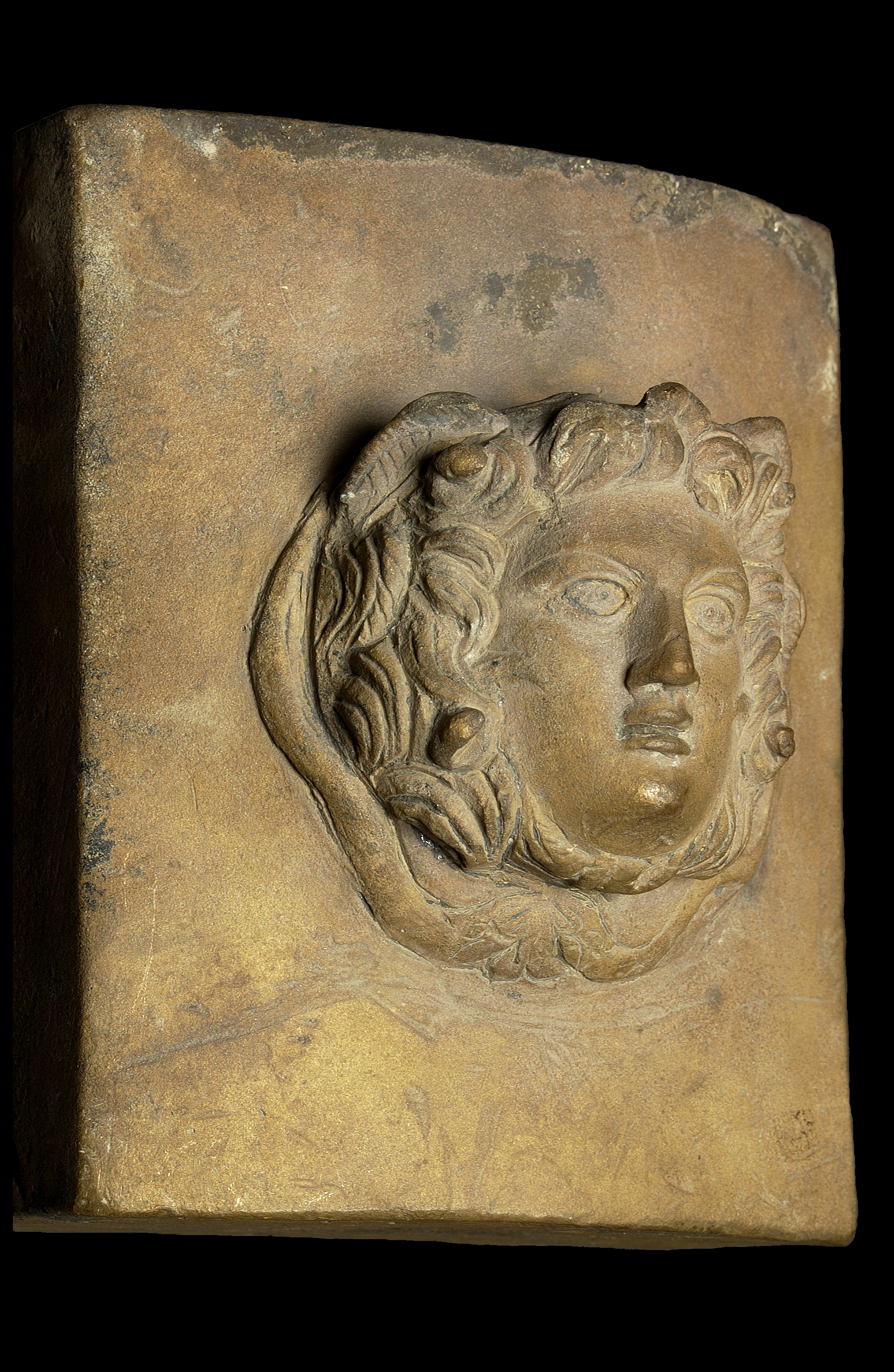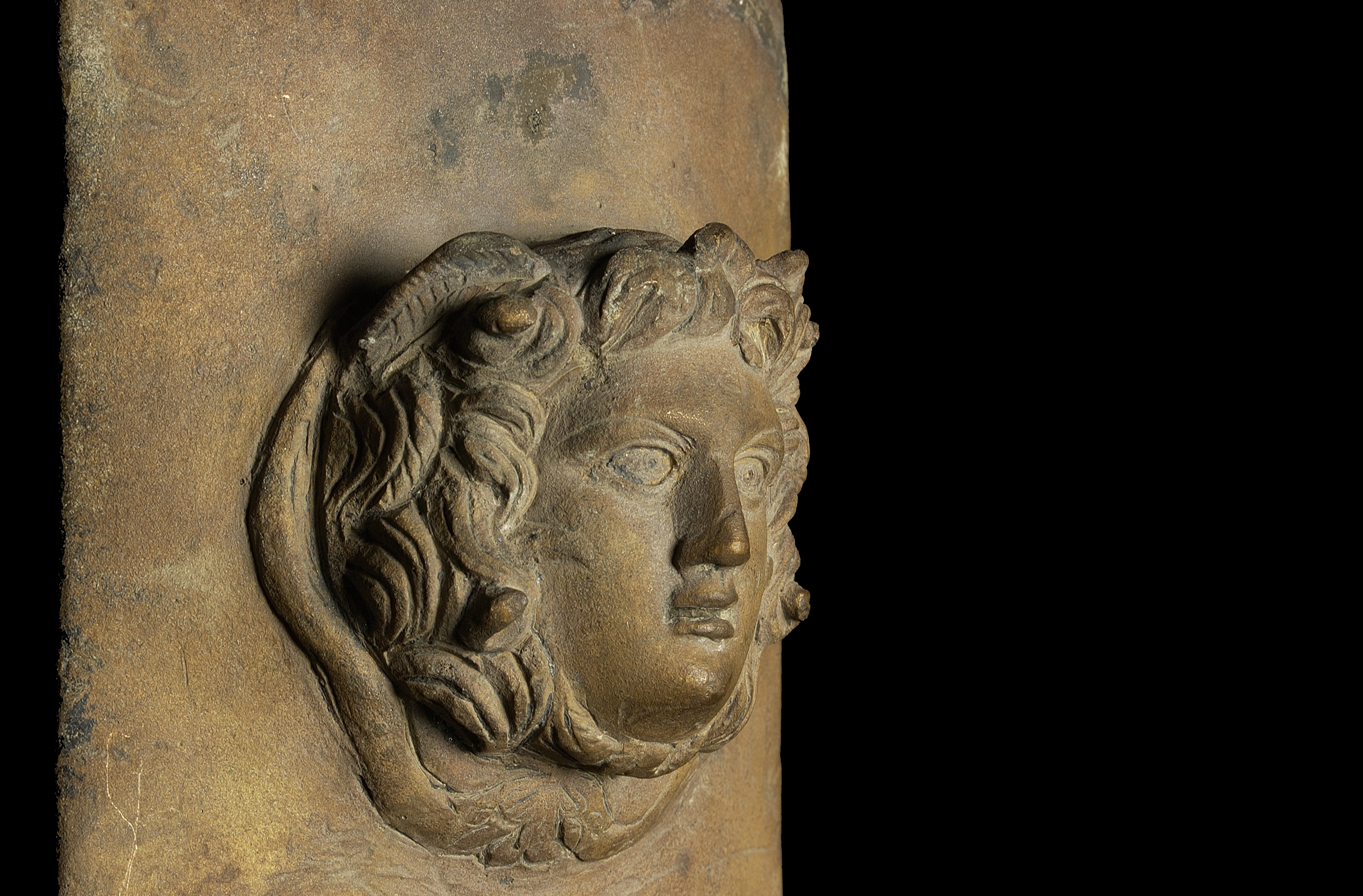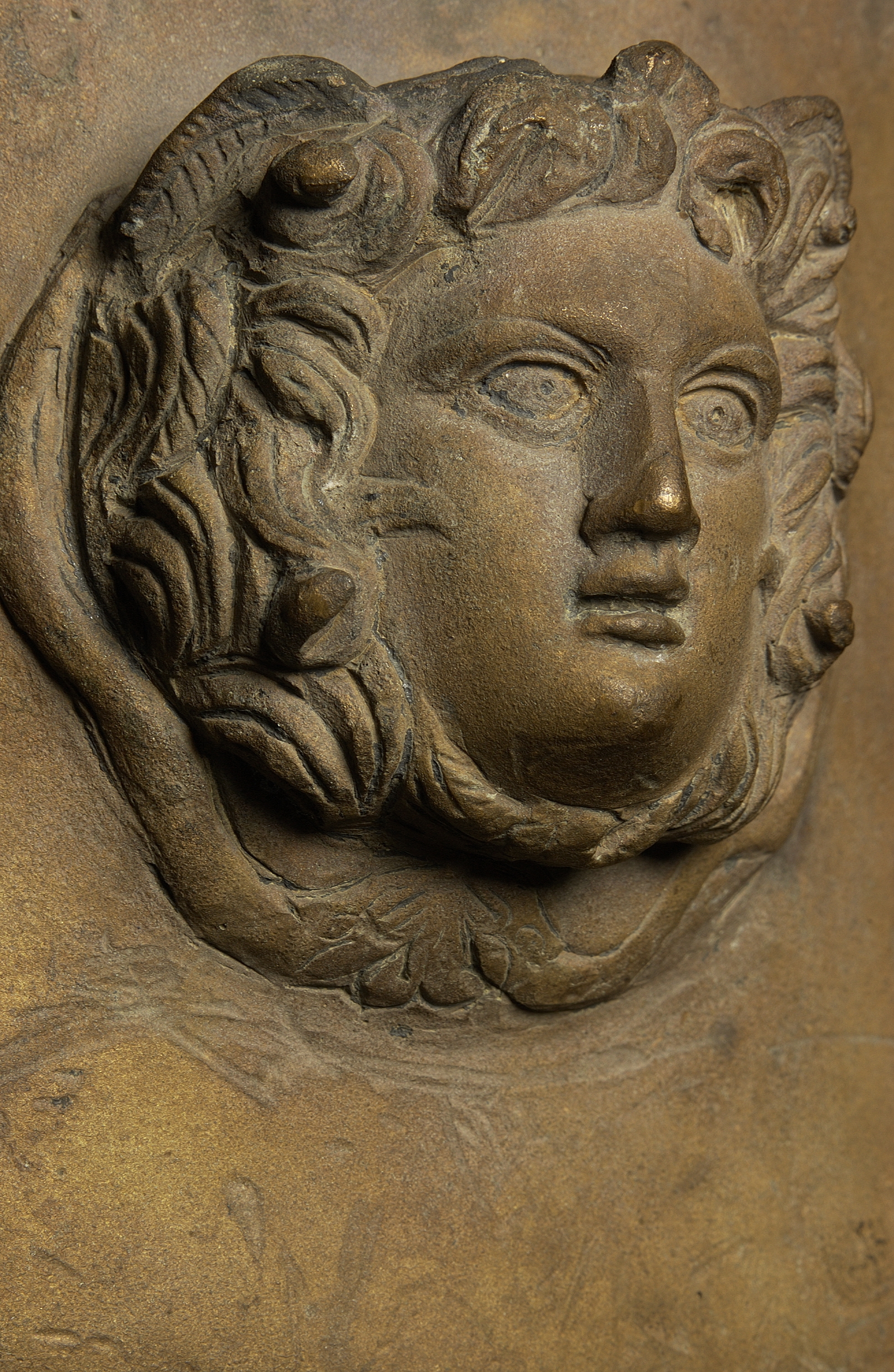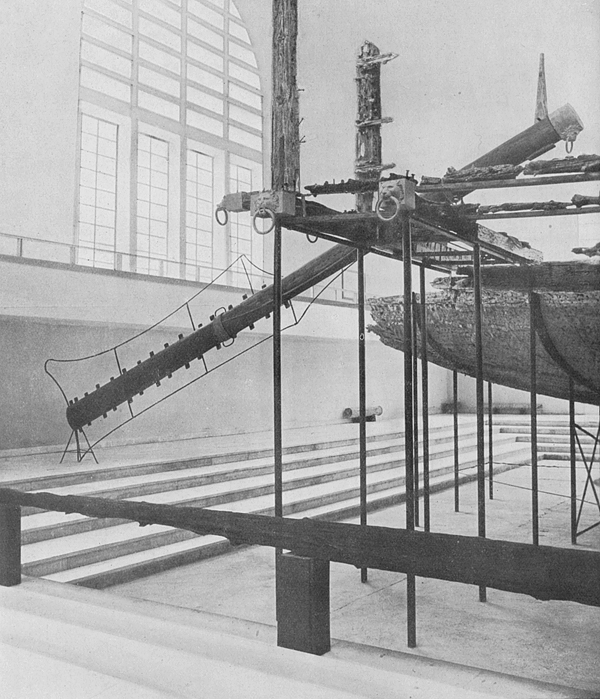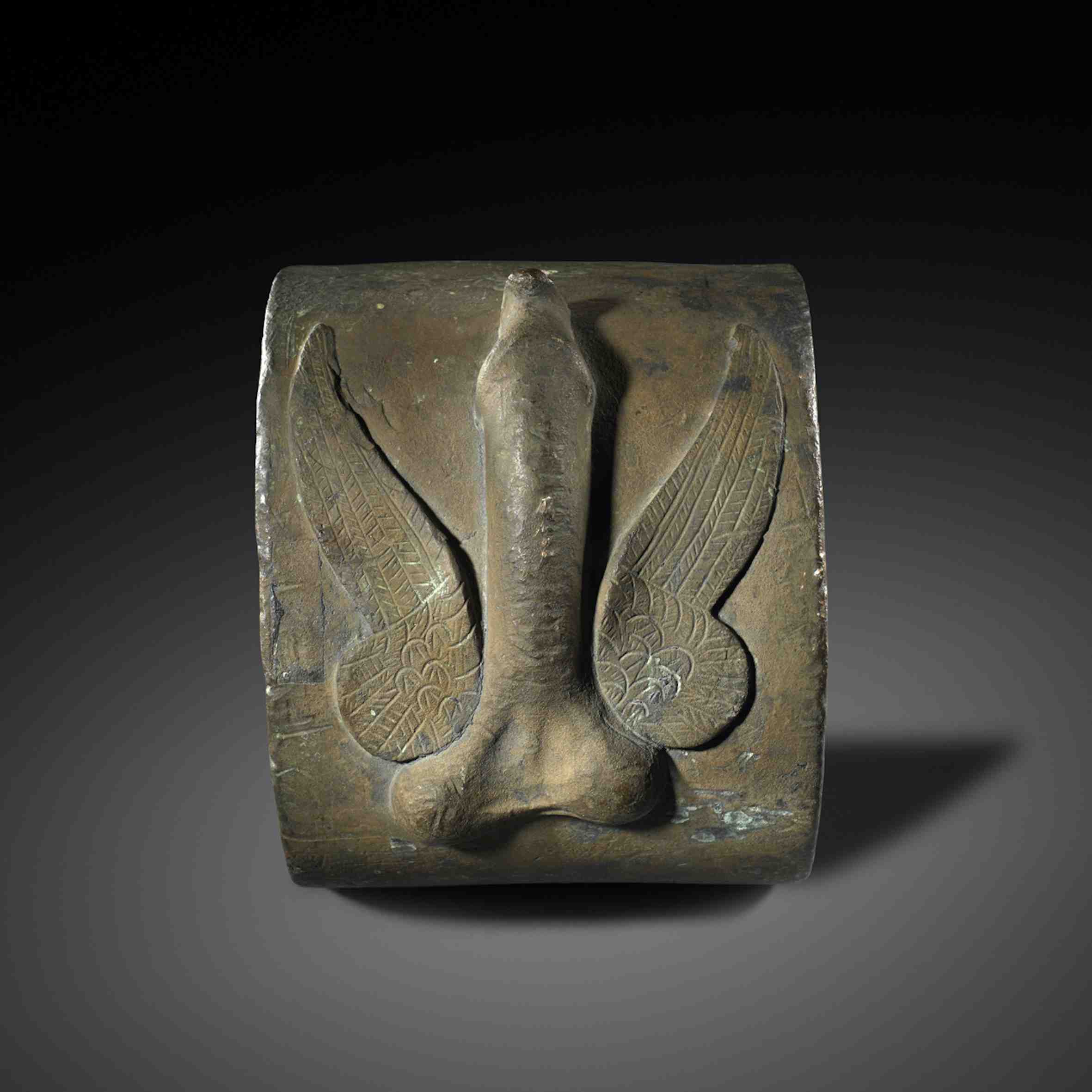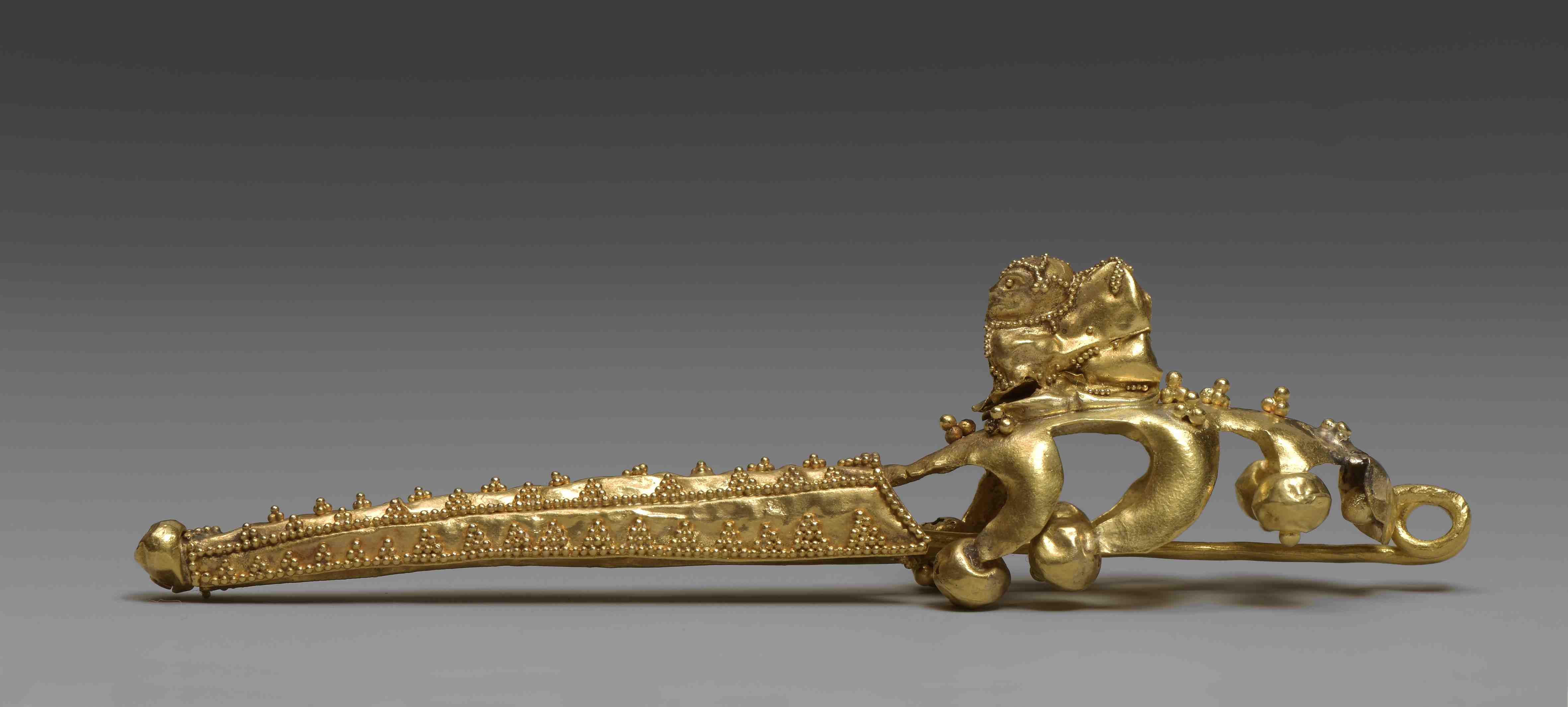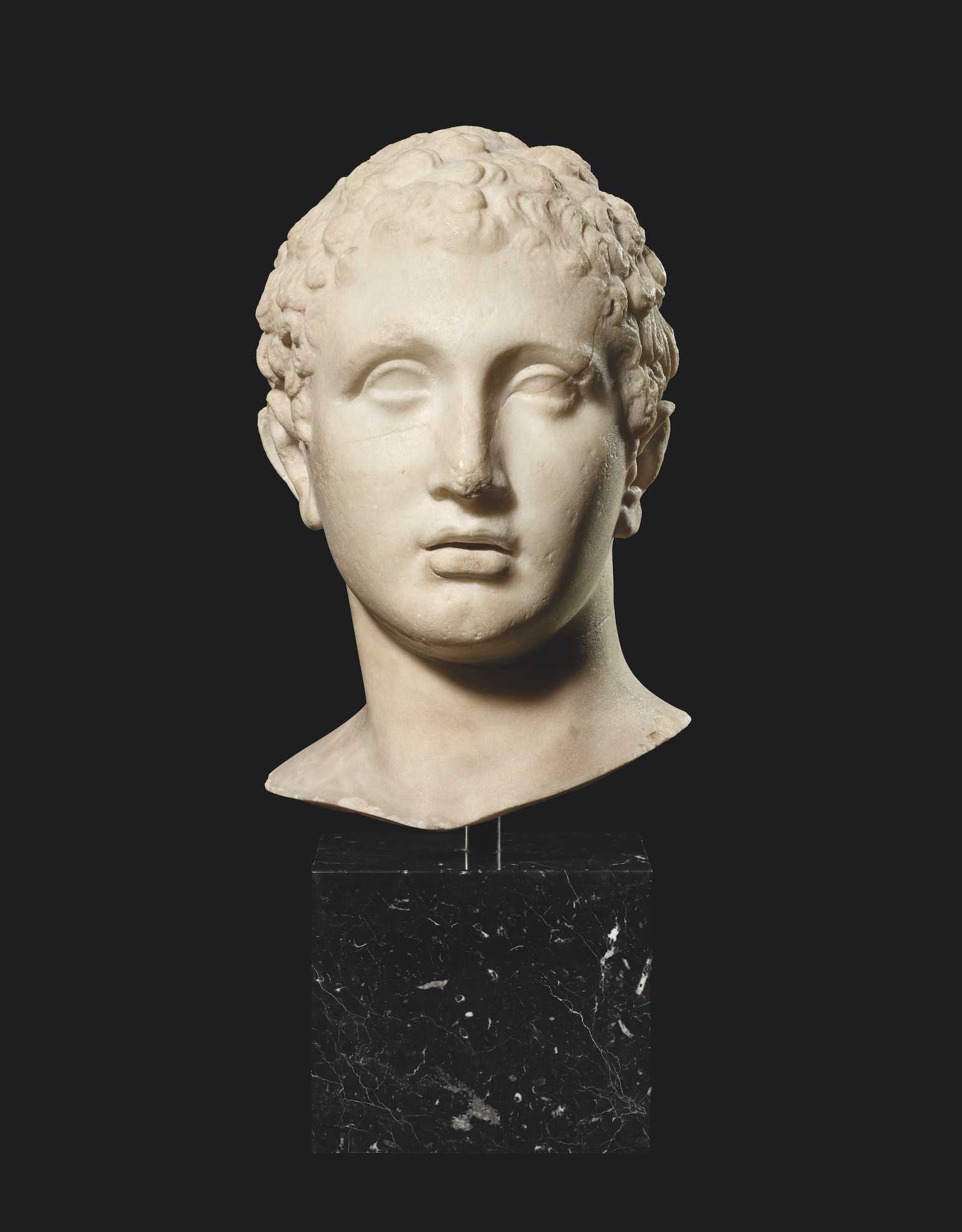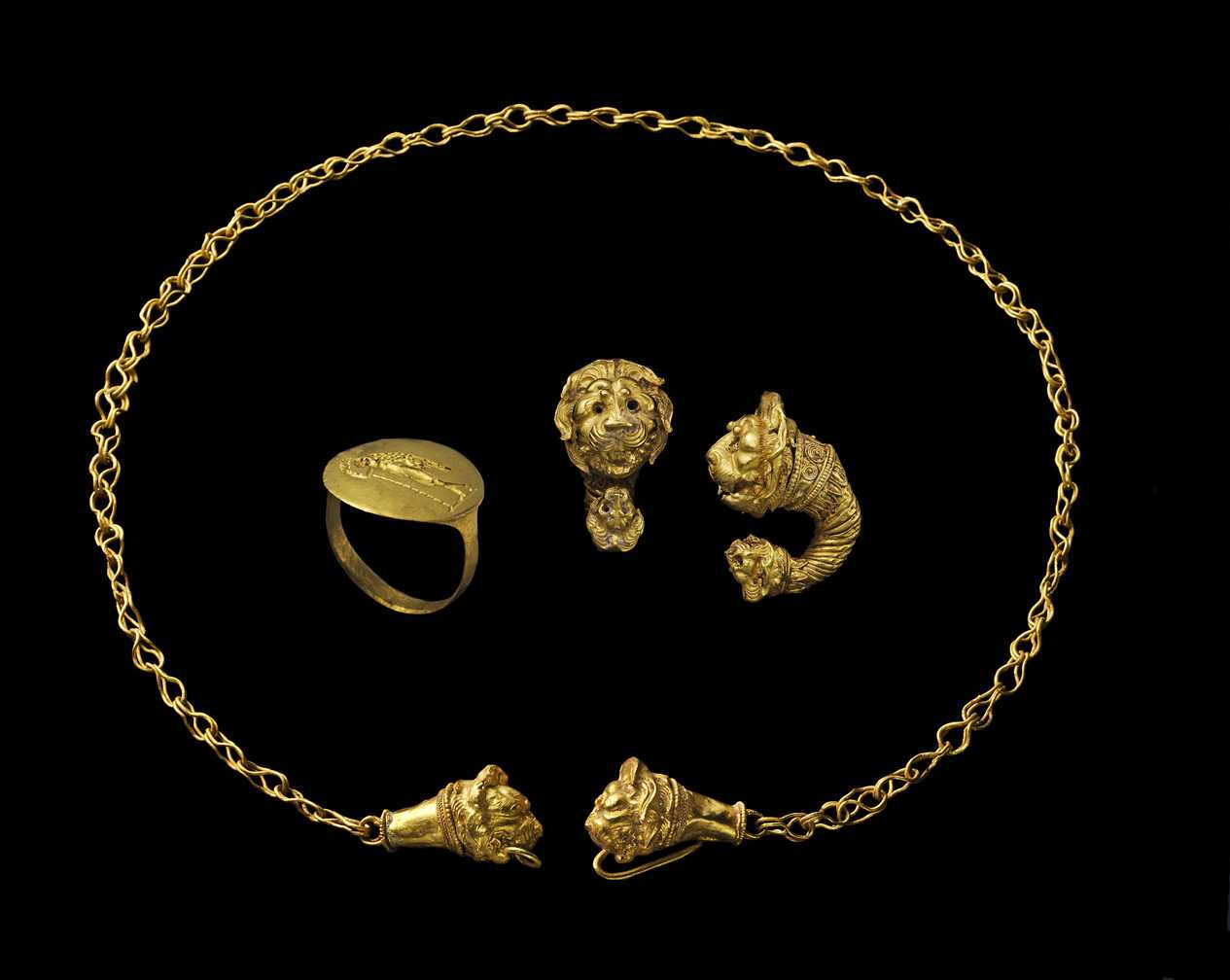The rectangular plaque decorated in high-relief with a head of Medusa-Gorgo with curly hair, flanked by two snakes, with finely detailed incised decoration. The sides, top and bottom, with piecing for square nails. The heavy bronze terminal originally encased a piece of timber - it most likely comes from a ship.
Note
Similar bronze pieces have been found at lake Nemi during work to rescue the Nemi ships - Caligula’s two sumptuous pleasure boats. These objects formed a decorative apparatus of exceptional richness: the ships were clearly ostentatious luxury vessels used as an expression of power and were essentially elaborate floating palaces, which contained quantities of marble, mosaic floors and even baths. Sadly the ships were later destroyed by a fire in 1944 during WWII. Only the bronzes, a few charred timbers and some material stored in Rome survived the fire. One of the wreaks is decorated with the head of the gorgon, Medusa, the epitome of apotropaic motifs.
The bronze ship plaque with head of Medusa was most likely fixed at the end of a prominent horizontal wooden beam, with the purpose of adverting danger and providing safe passage through treacherous waters.
In both style and workmanship, this plaque is very comparable to those found in Lake Nemi, and can also be dated to almost the same period, namely just before the middle of the 1st century A.D.
